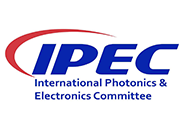 |
| Evolution from Pluggable to OIO, Enabling Ultra-Broadband Optical Connectivity for Future Data Centers |
| Date: PST 17:00-20:30 February 17, 2022 |
| EST 20:00-23:30 February 17, 2022 |
| CST 09:00-12:30 February 18, 2022 |
Form: Webinar on Zoom
Language: English |
|
 |
|
|
|
Internet-driven innovations have heavily impacted the digitalization of the social economy, and are greatly transforming how we think, live, and work from all walks of life. In the past few decades, the amount of data traffic in the Internet and between servers has exploded exponentially and shows no signs of slowing down. The pandemic is driving a data center boom, causing 2021 was a boom year for internet, and a vast majority of that internet traffic has to flow through data centers. Simultaneously, the convergence of 5G wireless, artificial intelligence, cloud computing, data analytics, industrial IoT technologies, and advanced robotics is transforming industrial automation and taking manufacturing to new heights of productivity. With the upgrades of 5G networks and IoT enterprise services with edge computing, as well as kernel technologies such as storage media and computing capacity, data center throughput is pushed to hit all-time highs, which is in return imposing a huge pressure on the bandwidth requirements of data center networks (DCNs).
As DCN's switching capacity transitions from 6.4Tb/s to 12.8Tb/s, to 25.6Tb/s, then all the way to 51.2Tb/s, the single switch ASIC development accelerates at breakneck speeds. However, when the capacity exceeds 51.2Tb/s, signal integrity represents the most difficult challenge for the high-frequency circuit and board designs because of limitations in the attenuation of high-frequency signals and constraints in the chip package size. As a result, the growth of chip capacity becomes a bottleneck.
This is the challenge that the optoelectronic industry aims to tackle with its latest development of innovative technologies. Notably, the industry has initiated the introduction of new Optical Input/Output (OIO) technology. Compared with the mature Electrical Input/Output (EIO) technology, OIO is spearheaded to provide 100 times or higher channel density, with each channel offering over 100 times more bandwidth. Consequently, OIO is likely a key enabler or game changer for switching to evolve to 100Tb/s or even 1000Tb/s. However, as with cutting-edge technologies, OIO faces many tough challenges, calling for open discussion and collaborative efforts across the entire optoelectronic industry.
Against this backdrop, the Global Advanced Optoelectronic Technology and Industry Development Seminar, jointly organized by the International Photonics & Electronics Committee (IPEC) and China International Optoelectronic Exposition (CIOE), will be held online on February 17, 2022 (EST). This seminar will focus on exploring advanced optoelectronic technologies to enable high-speed optical connectivities for 100Tb/s switching capacity, inspired by future hyperscale data centers.
This seminar will be championed by IPEC's Advanced Research Work Group and invites Internet service providers (ISPs), data center equipment vendors, optoelectronic device vendors, and other international experts in the data center interconnection field to discuss DCN service application scenarios, future development trends, and cutting-edge technologies such as Co-Packaged Optics (CPO) and OIO. A panel discussion will offer global peers a platform for discussing network architectures and technology development trends. |
|
|
| Agenda |
EST
20:00-23:30 |
Topic & Speaker |
| 20:00-20:05 |
Welcome & Intro
IPEC |
| 20:05-20:10 |
Welcome & Intro
EPIC |
| 20:10-20:30 |
Pluggable Optics for 102.4T Switches
Andy Bechtolsheim, Arista |
| 20:30-20:50 |
Reliability and Quality Strategy for CPO Product
Vincent Zeng, Meta (formerly Facebook) |
| 20:50-21:10 |
Co-packaged Optics and Next-gen Optical I/O Applications
Robert Blum, Intel |
| 21:10-21:30 |
Interface and Density Requirements across Applications
Manish Mehta, Broadcom |
| 21:30-21:50 |
Electrical Interfaces
Nathan Tracy, TE Connectivity |
| 21:50-22:10 |
New Opportunities in Photonics for 100T
Dan Blumenthal, UCSB |
| 22:10-22:30 |
Perspectives on Achieving 100T
Chen Zhu, Baidu |
| 22:30-22:50 |
Requirements and Challenges of CPOs for Data Centers
Chongjin Xie, Alibaba |
| 22:50-23:10 |
External Laser Small Form Factor Pluggable (ELSFP)
Eric Bernier, Huawei |
| 23:10-23:30 |
Panel Discussion |
|
|
|
|
| About International Photonics & Electronics Committee (IPEC) |
|
 |
The International Photonics & Electronics Committee (IPEC) is an international standards organization that is committed to developing open optoelectronic standards and delivering strategic roadmap reports. IPEC focuses on standardizing solutions in optical chips, optical/electrical components, and optical modules. Markets addressed by IPEC include 5G, IoT and AI. |
|
| IPEC is open to any interested party who wishes to join. All members have the opportunity to participate in developing all IPEC standards and reports on a non-discriminatory basis. The process of developing these standards and reports is transparent to all members. IPEC is registered in Switzerland. |
| Evolution from Pluggable to OIO, Enabling Ultra-Broadband Optical Connectivity for Future Data Centers |
|
|
|
|






